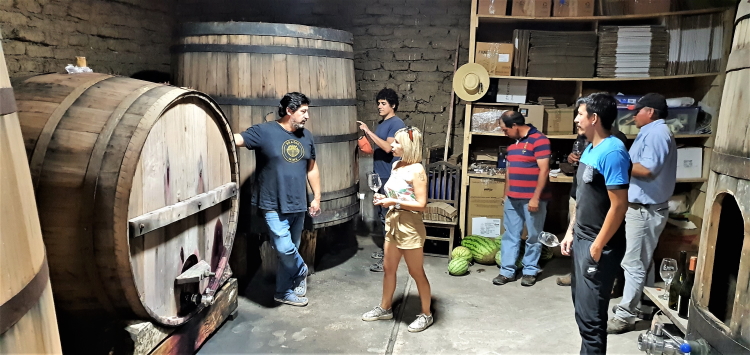200 Years Old and Going Strong!
Escaping the city has not been easy for the past year, but thankfully we have had a few more options recently and we are grabbing them with both hands. Last week we spent a few days in the Maule wine region, 4 hours drive south of Santiago, and marveled at some of the oldest vines in the world, spending a little time with passionate winemakers treating these old beauties with the respect they deserve.
Note: This blog is about Gonzales Bastias, but we also have a visit to Bouchon to share at some point. Bouchon has ungrafted old vines too, and also lets vines grow high into the trees!
The wine region of Maule has historically been known for the quantity of wine it produces but not necessarily the quality. This is changing fast as talented winemakers are now producing premium wines from historically important varieties. Also, wines are increasingly being crafted from some of the oldest vines in the world.

Rauli wooden casks in the cellar at the Gonzalez Bastias winery
The Gonzalez Bastias winery is a fantastic illustration of dedication to organic, low intervention winemaking and the preservation of a 200-year-old viticultural heritage. Jose Luis Gomez Bastias is a fifth-generation vintner farming vineyards planted in the early 1800s. The most elderly of these dry-farmed Pais and Semillon vines are gnarly, twisted works of art as you can see in the videos. The 4 hectares of vines the family owns are organically farmed and Jose Luis enthusiastically recounts how his old vines are now beautifully balanced with roots stretching down 10 meters. These elder statesmen were never attacked by Phylloxera so they are still on their original rootstocks.
Gonzales Bastias creates natural (I know the term causes debate!) wines that undergo fermentation using ambient yeast the open concrete lagars you see in the video. Jose Luis does all he can to avoid manipulating the wine too much, there is a little pumping as gravity is not an option with the ramshackle design of this low-tech winery, he does add a small amount of sulfur at harvest to avoid grapes spoiling (which everyone does), but that is about it!
Bastias wines are not pressed, so after fermentation, the free flow wine is drained off from the bottom of the lagar and transferred to its aging vessel for the next few months. Filtering is avoided, so after time spent maturing in either Chilean “Rauli” wooden casks or clay amphorae the wine is again siphoned off for bottling. The gross lees will have settled out over the weeks or months but the fine lees will still be in suspension, giving an extra complexity and texture to these quirky wines.
Animals grazing on the land help control grasses and weeds plus provide natural fertilizer, plowing is done with horses and hand pruning and harvest are the only way these old bush vines can be handled. They have their own market garden and the owners and staff eat from it for 7 or 8 months a year. The place is a thing of beauty for wine lovers, especially for those really into “natural” wines. The area of Chile is a little slice of paradise and is a long way from anywhere, simply getting to this winery is an adventure in itself.


